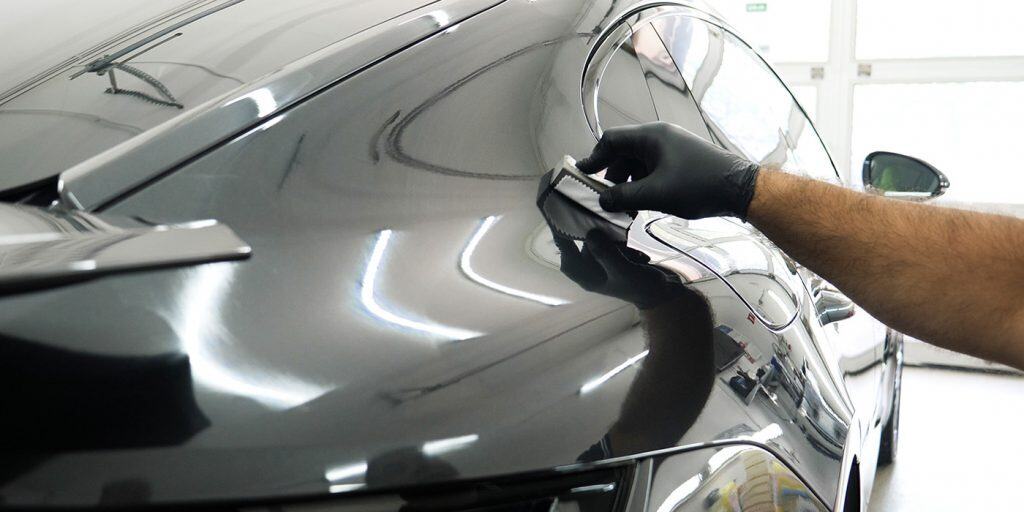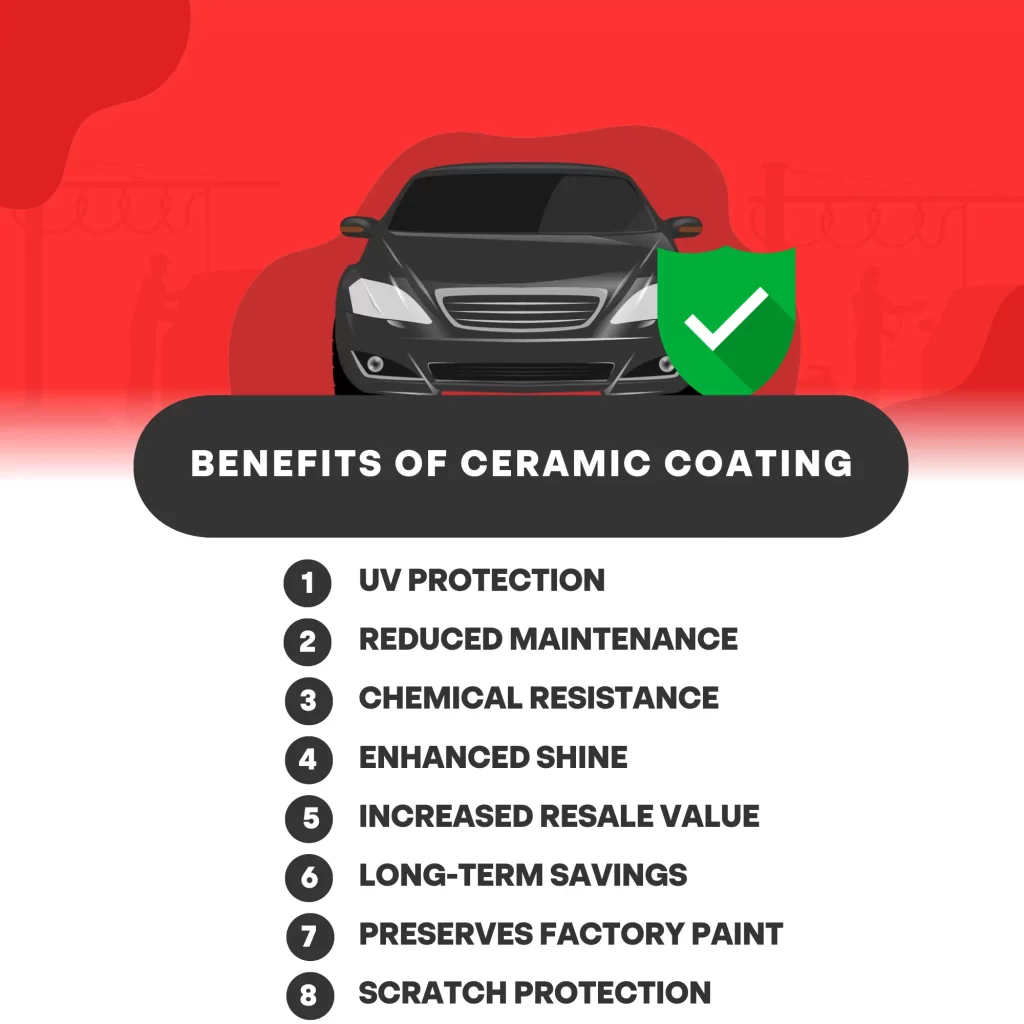Ceramic Coating vs Traditional Wax: Which Offers Better Protection?
Ceramic Coating vs Traditional Wax: Which Offers Better Protection?
Blog Article
Ceramic Finishing vs. Traditional Wax: Which Supplies Much Better Long-Term Defense?
The debate between ceramic layers and conventional wax for automobile protection has actually gathered substantial attention amongst vehicle enthusiasts and professionals alike. Ceramic finishings flaunt superior durability and resistance to environmental elements, yet the complexity of their application elevates questions about availability and functionality.
Review of Ceramic Layer
Ceramic finishing has gained considerable popularity among auto enthusiasts and detailers alike due to its innovative protective high qualities. This innovative technology is developed to develop a resilient, hydrophobic shield over a vehicle's paint surface, significantly improving its resistance to environmental impurities such as dust, UV rays, and chemical stains. Unlike typical wax, which provides a short-term layer of protection, ceramic coatings bond at a molecular level with the paint, offering long-lasting toughness-- commonly prolonging beyond two years with proper maintenance.
The application procedure involves precise prep work of the lorry's surface area, consisting of cleansing and brightening to guarantee optimal attachment. As soon as used, the finishing treatments to create a robust layer that not only adds deepness and gloss to the paint yet likewise simplifies maintenance. With its hydrophobic properties, ceramic coating enables water and dirt to glide off more conveniently, decreasing the frequency of cleans and decreasing the threat of swirl marks.
Additionally, ceramic finishings are offered in various formulas, allowing individuals to select items customized to their details requirements and preferences. In general, ceramic finishing represents a considerable development in paint security innovation, delivering premium efficiency compared to standard options.
Introduction of Conventional Wax
Traditionally considered a staple in automobile care, wax acts as a prominent selection for those looking for a simple method to boost and secure their car's paint - ceramic coating. Automotive wax normally makes up all-natural active ingredients, such as carnauba, or artificial compounds, developed to create a protective layer on the surface area of the paint. This layer not only boosts the car's gloss and radiate but additionally offers an obstacle versus ecological impurities
The application of wax is normally user-friendly, making it easily accessible for both professionals and DIY enthusiasts. Once used, wax needs a treating duration, after which it sets to create a protective covering.
However, while wax works for boosting the visual charm of a vehicle, it is vital to note that the security it offers might necessitate more constant reapplication compared to alternative items, such as ceramic coatings. Generally, typical wax remains a favored option for those prioritizing ease of usage and prompt aesthetic renovation.
Toughness and Long Life Comparison
While both ceramic coatings and traditional wax offer safety benefits for automotive paint, their longevity and longevity differ substantially. Traditional wax, normally made from natural carnauba or synthetic polymers, normally offers a protective layer that lasts roughly three to 6 months. This relatively short lifespan necessitates normal reapplication to keep ideal security.
On the other hand, ceramic finishes are engineered from advanced nanotechnology, creating a covalent bond with the paint surface. This causes a durable, hydrophobic layer that can sustain for two to five years, relying on the product and ecological conditions. The exceptional durability of ceramic finishes is credited to their chemical structure, click reference which offers boosted resistance to scrapes, UV rays, and oxidation.

Defense Versus Environmental Variables
Safeguarding a vehicle's paint from environmental factors is important for preserving its appearance and value gradually. Automobiles are frequently revealed to a selection of elements, consisting of UV rays, bird droppings, tree sap, acid rainfall, and roadway grime, all of which can jeopardize the integrity of the paintwork.
Ceramic finishings provide a durable protection versus these environmental assailants. Unlike conventional wax, which can deteriorate promptly under UV direct exposure, ceramic finishings form a long lasting, hydrophobic layer that withstands the unsafe impacts of sunlight and environmental contaminants. This sophisticated innovation creates a chemical bond with the vehicle's surface area, providing exceptional protection that lasts for many years, even in rough conditions.
Typical wax, while simpler to apply, typically requires regular reapplication and offers minimal resistance to contaminants and UV rays. Gradually, it can damage down, leaving the paint susceptible to scratches and oxidation. In comparison, ceramic coatings maintain their protective top qualities longer, substantially minimizing the threat of paint damage and ensuring that the automobile preserves its visual charm. Because of this, ceramic coverings are progressively acknowledged as the exceptional option for long-lasting defense against ecological factors.
Application and Upkeep Differences
The methods of application and succeeding maintenance for ceramic finishings and conventional wax vary considerably, impacting the general user experience and performance of each item. Ceramic finishings need a more elaborate application process, typically involving surface prep work that consists of washing, sanitizing, and polishing the lorry. As soon as the surface prepares, the ceramic finishing is applied in a controlled setting, typically needing specialist experience to guarantee appropriate curing and bonding to the advice paint.

While both products boost automobile appearance, the longer-lasting protection offered by ceramic finishings may validate their preliminary investment, in spite of the more demanding application process. On the other hand, standard wax continues to be a preferred option for those seeking a simpler, albeit short-term, remedy.

Final Thought
Finally, ceramic coatings show significant advantages over traditional wax in terms of sturdiness and environmental management. With a life expectancy extending 2 to 5 years and superior resistance to UV rays, dirt, and chemical spots, ceramic finishings offer an extra efficient remedy for lasting automobile upkeep. Although the application process might call for specialist expertise, the resulting expense financial savings and minimized regularity of reapplication emphasize the value of ceramic coatings for those looking for optimal vehicle security.
The dispute between ceramic coatings and typical wax for car defense has gathered considerable attention among automobile enthusiasts and professionals alike. Unlike standard wax, which supplies a momentary layer of defense, ceramic coverings bond at a molecular degree with the paint, supplying durable durability-- frequently expanding past two years with appropriate maintenance.
While both ceramic coatings and standard wax offer protective benefits for vehicle paint, their durability and durability vary considerably. For automobile lovers looking for long-term defense, ceramic layers provide a compelling advantage over typical wax products.
In final thought, ceramic coatings show significant benefits over standard wax in terms of durability and environmental defense.
Report this page